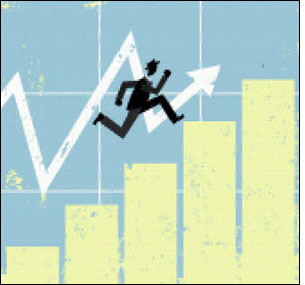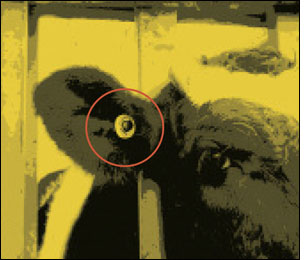Presented below is part one of an 11-part series examining the use of radio frequency identification for unexpected applications. In this chapter, we consider RFID’s use in the business world.
1. Keeping Traders Honest
The New York Stock Exchange is using a real-time location system to track the handheld computers traders use to make transactions. The system will send a message to management if a trader goes to an unauthorized floor, where he or she could gain nonpublic information that could be used to make an unfair transaction. (See New York Stock Exchange to Track Traders Via RFID.)
|
|
2. Preventing Theft
From cargo, cars and casino chips to library books, retail apparel and tires, businesses worldwide are tagging and tracking items to detect and deter theft. They are using a variety of approaches. A car dealership in Toronto, for example, employs an RFID system that alerts office management when a key has not been returned following its removal from a secure case. A German retailer incorporates RFID tags with electronic article surveillance functionality for loss prevention into each garment’s product-care label. (See Emprevi Launches Service for Securing, Tracking Cargo, RFID Halts Theft at Toronto Car Dealership, RFID Protects Casino Against Theft, San Bernardino’s State-of-the-Art Library Incorporates RFID, Gerry Weber’s Pain-Free RFID Revolution and Mexican Bus Company Fights Tire Theft With RFID.)
3. Safeguarding Pharmaceuticals
Gador Laboratories, one of Argentina’s largest drug providers, is RFID-tracking individual pharmaceutical products, as well as the pallets on which they are transported, to reduce counterfeiting. Nigeria’s National Agency for Food and Drug Administration & Control is using an RFID system to authenticate pharmaceuticals to combat counterfeiters, and to improve the quality of medications sold in that country. (See Gador to Track Drugs in Argentina and Nigerian Drug Agency Opts for RFID Anticounterfeiting Technology.)
4. Ensuring Food Safety
What do cattle and deer have in common, other than four legs, a tail and soulful eyes? In New Zealand and a growing number of other locations worldwide, the answer is RFID tags. Beef and venison are a cornerstone of New Zealand’s agricultural exports market. Therefore, protecting domestically raised cattle and deer is a priority for both ranchers and the national government. That’s why New Zealand’s meat production industry has formed National Animal Identification and Tracing (NAIT), a company that provides New Zealand livestock owners, processors and government authorities with timely, quality information on livestock movement and locations.
Russell Burnard, chief executive for Wellington-based NAIT, notes that the insight provided by RFID livestock tracking technology promises to become an essential tool for ensuring food safety. “In the event of a biosecurity or food scare, it will enable cattle and deer to be traced much faster than with current manual systems, and will provide more reliable and up-to-date information on animal movements,” he says. “It will allow tracing to take place in large-scale outbreaks that would not be feasible under current manual systems.” RFID-generated data will also enable the New Zealand Ministry of Agriculture and Forestry’s biosecurity division to craft more accurate and useful disease and prevention programs, he adds.
The system is already in use on a limited scale. “The RFID tag records the animal’s unique ID number,” Burnard says. “Farmers then enter this [data], along with the sex, species and date of birth of individual animals, into the NAIT database.” NAIT’s tracking technology is being implemented on cattle ranches first, with deer meat providers expected to join the program in March 2013. The system is currently voluntary, but could become mandatory with the passage of proposed government legislation in mid to late 2012, he says.
Falling tag and reader prices are making livestock tracking increasingly appealing to ranchers worldwide, yet cost remains a concern. “RFID is not overly expensive for livestock track and trace, but it’s expensive enough, especially if you’re a small cattle rancher,” observes Michael J. Liard, an RFID industry analyst at ABI Research. “It’s not like this is Walmart, it’s a cattle rancher, so price points are still important.”
Liard believes government action will be necessary to kick-start global adoption. “The key driver really is government mandates,” he says. Australia and Canada already have mandated the use of RFID to track cattle. (See Riding Herd: RFID Tracks Livestock and Canadian Beef Processor Deploys RFID for Food Safety.)
Meanwhile, he notes, it’s apparent to the international livestock market community that RFID is the technology best suited to meet government monitoring mandates. “In some markets, bar-coded ear tags are good enough for cattle tracking, but we all know the benefits of RFID versus bar code, starting with nonline-of-sight [tag reads].” RFID tags are more reliable and easier to use than bar-code equivalents in livestock transportation, holding and processing environments, he adds. “Those bar codes can get dirty, so you would have to go up to them and try to manually scan them and move away the dirt,” he says. “RFID provides an automated, wireless way to collect that information.”
Burnard feels virtually all ranchers will eventually realize RFID has the ability to create important benefits beyond food safety. “Depending on the type of farm, RFID technology can be used to weigh animals, track treatments, record breeding information and measure milk production,” he says. “This will help [ranchers] maintain New Zealand’s reputation as a premium producer and safeguard New Zealand’s brand and farmer incomes.”—John Edwards
5. Expediting Inspections
Magnor Plant is RFID-tagging safety and lifting equipment at British construction sites to speed up the inspection process, providing results in a matter of hours rather than weeks. The system lets inspectors carry out the process electronically, print a document on-site and have it signed on the same day. (See Inspections Made More Efficient for British Construction Firm.)
6. Instructing Robots
Manufacturers use RFID to give robots precise, detailed and easy-to-follow instructions, accelerating production time and cutting costs. In addition, RFID-driven robots create more consistent and higher-quality assembled products than other approaches, experts say. Custom Cupboards, in Wichita, Kan., employs an RFID-driven robotic system to build custom cabinet face frames. Barcelona’s KH Lloreda developed an automated system to transport its household cleaning products from manufacturing to distribution and on to customers, virtually eliminating the need for manual labor. (See RFID: The Next Stage and Robots and RFID Help KH Lloreda Distribute Its Products.)
7. Boosting Farmers’ Standard of Living
Almacafé, a subsidiary of the National Federation of Coffee Growers of Colombia, tracks high-value coffee beans from the farms to the warehouses, and during processing and bagging for export to roasting and trading facilities. The RFID system helps the Federation better compete in the global market, and ensures that small family farmers get paid a premium for their specialty products. (See RFID Helps Ensure That Special Cup of Joe.)
8. Understanding Readership
Focus distributed RFID-tagged copies of its magazine with built-in RFID readers to subscribers, to demonstrate the continuing strength of advertising in print publications. The system could determine how many members of a household read the magazine, and how long they spent on each spread. (See RFID Helps German Publisher Put Focus on Ads.)
9. Getting Floored
InterfaceFlor, based in LaGrange, Ga., embeds RFID tags in its commercial carpet tiles, to make them easy and cost-efficient to maintain. A vacuum equipped with an RFID reader can determine which tiles were cleaned. Jilg Parkett, in Austria, installs RFID tags with temperature and humidity sensors, which transmit data to RFID readers, in its parquet floors. The system is designed to verify the flooring was properly installed. (See Cleaning Up With RFID and Wooden-Flooring Companies Embed RFID Tags Beneath Parquet.)
10. Controlling Termites
An RFID-powered termite-detection system, from Dow AgroSciences, based in Indianapolis, helps pest-control technicians find and eradicate wood-devouring insects faster and more efficiently. Tagged traps can be checked with a reader in minutes, to determine their condition. The system also automates billing and inventory tasks, and ensures that quality and regulatory requirements are met. (See Getting the Bugs Out.)
Click here to read about RFID’s use in other unexpected applications.
Illustration: iStockphoto



